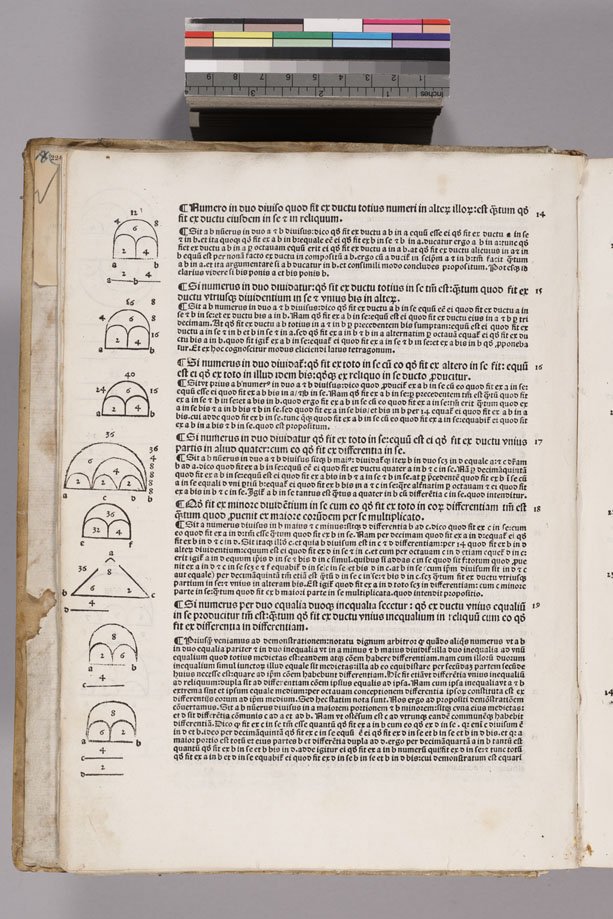- About MAA
- Membership
- MAA Publications
- Periodicals
- Blogs
- MAA Book Series
- MAA Press (an imprint of the AMS)
- MAA Notes
- MAA Reviews
- Mathematical Communication
- Information for Libraries
- Author Resources
- Advertise with MAA
- Meetings
- Competitions
- Programs
- Communities
- MAA Sections
- SIGMAA
- MAA Connect
- Students
- MAA Awards
- Awards Booklets
- Writing Awards
- Teaching Awards
- Service Awards
- Research Awards
- Lecture Awards
- Putnam Competition Individual and Team Winners
- D. E. Shaw Group AMC 8 Awards & Certificates
- Maryam Mirzakhani AMC 10 A Awards & Certificates
- Two Sigma AMC 10 B Awards & Certificates
- Jane Street AMC 12 A Awards & Certificates
- Akamai AMC 12 B Awards & Certificates
- High School Teachers
- News
You are here
Mathematical Treasures - Jordanus de Nemore's Arithmetica
Jordanus de Nemore (1225-1260) was a German scholar who wrote several books on arithmetic and geometry. In the ten books of his De elementis arismetice artis, he attempted to write a comprehensive work on arithmetic similar to Euclid’s Elements in geometry. The images below are from an early printed edition of the Arithmetica of Jordanus de Nemore, who would have handwritten the original.
A discussion on the operation of addition employs diagrams that look a bit like “number lines” along with operational “jumps” to demonstrate the additive process. The first diagram illustrates that \(2\times(2+4)=4+8=12.\)

This is page 7. The page contains theorems 14 through 19 of Book I. Rough translations of the statements of the theorems follow.
14. If a number is divided into two parts and the whole number is multiplied by one of the parts, the result is that number multiplied by itself added to the product of the two parts.
15. If a number is divided into two parts and the whole is multiplied by itself, the result is the sum of each part multiplied by itself and twice one part multiplied by the other.
16. If a number is divided into two parts, then the sum of the whole multiplied by itself and one part multiplied by itself is twice the whole multiplied by that part and the second part multiplied by itself.
17. If a number is divided into two parts, then the whole multiplied by itself is the same as four times the product of one part multiplied by the other and the difference between the two parts multiplied by itself.
18. If a number is divided into two parts, then the smaller multiplied by itself and the whole number multiplied by the difference of the two parts is the same as the larger multiplied by itself.
19. If a number is divided into two equal parts and also into two unequal parts, then one of the equal parts multiplied by itself is the same as the product of the unequal parts and the product of the differences between the unequal parts and the equal parts.
Note that illustrations of each theorem are given by diagrams with numbers in the left margin. Thus, the first diagram illustrates that \(2\times(2+4)=4+8=12.\)
An introductory page from the same copy of the work follows:

These images appear courtesy of the Columbia University Libraries, where the book featured above is part of the Plimpton and Smith Collections.
See images from a manuscript copy of Jordanus de Nemore's De triangulis here in Convergence.
Frank J. Swetz and Victor J. Katz, "Mathematical Treasures - Jordanus de Nemore's Arithmetica," Convergence (January 2011)




